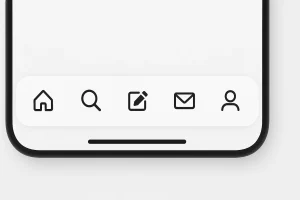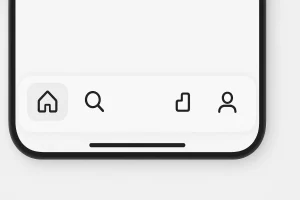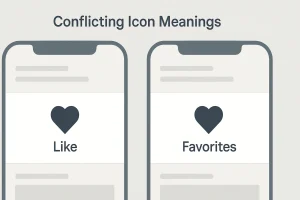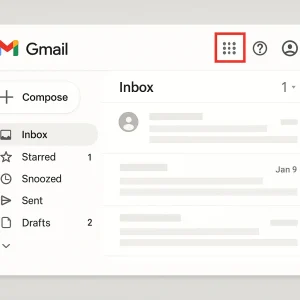Icons are everywhere in digital products — from the little house symbol on YouTube to the shopping cart on Amazon. They save space, look sleek, and can make interfaces feel intuitive. But here’s the catch: not all icons are created equal.
When used carelessly, icons confuse more than they help. A great user experience depends not just on pretty symbols but on whether users actually understand them. Let’s break down how to make icons truly user-friendly.
Benefits of Icons
 Icons, when designed well, come with real advantages:
Icons, when designed well, come with real advantages:
Touch-friendly → Icons are usually large enough to hit easily on touch screens.
Space-saving → They help designers fit more features into small screens.
Fast recognition → Familiar icons like “home” or “search” are recognized instantly.
No translation needed → An envelope means “mail” almost everywhere in the world.
Visual appeal → Icons break up text-heavy screens and add polish to a product.
Established pattern → Users already expect to see them — nearly every app uses icons.
But here’s the thing: those strengths turn into weaknesses when icons are vague, inconsistent, or overloaded with meaning.
Types of Icons in UX
Icons usually fall into a few categories. Understanding them helps you design smarter.
Universal Icons
 Some icons achieve near-universal recognition. Think of the home icon 🏠, the shopping cart 🛒, or the print icon 🖨️. These symbols are so widely used that most users don’t need to guess their function.
Some icons achieve near-universal recognition. Think of the home icon 🏠, the shopping cart 🛒, or the print icon 🖨️. These symbols are so widely used that most users don’t need to guess their function.
But don’t get too comfortable — truly universal icons are rare. Outside of a handful of examples, most pictograms still create confusion because meanings shift across platforms.
Confusing and Conflicting Icons
 Things get tricky when icons look familiar but mean different things depending on the app. A great example: the heart ❤️ and the star ⭐.
Things get tricky when icons look familiar but mean different things depending on the app. A great example: the heart ❤️ and the star ⭐.
In some apps, a heart means “like.”
In others, it means “save to favorites.”
A star might mean “bookmark” in one app and “feature” in another.
This inconsistency frustrates users and forces them to guess. As Nielsen Norman Group points out, icons with multiple interpretations often lead to mistakes and hesitation.
Unique Icons
 Sometimes apps need icons for brand-new features, like tracking your sleep time or reviewing past orders. Designers often invent unique icons for these — but here’s the problem: unique often means unrecognizable.
Sometimes apps need icons for brand-new features, like tracking your sleep time or reviewing past orders. Designers often invent unique icons for these — but here’s the problem: unique often means unrecognizable.
A well-known case: when Google hid its app grid behind an abstract icon in Gmail, users flooded support with questions like “Where’s my Calendar?”
The lesson? Just because a designer understands an icon doesn’t mean the user will — especially first-timers
Why Lables Matters
The phrase “A word is worth a thousand pictures” has long been associated with Apple’s Human Interface Group—and its ethos was inspired by early UX wisdom from Bruce Tognazzini, the founder of that group in the mid-1980s.
And those words aren’t just catchy—they’re backed by real-world data. A popular UX-Planet post cites a UserTesting study showing:
With labels → users correctly predicted an icon’s action 88% of the time.
Without labels → accuracy dropped to 60%.
For unlabeled, unique icons → correct guessing fell sharply to just 34%
That stark usability gap proves how one simple label can save users from confusion and unnecessary guessing.
Tutorials and Onboarding: A Bad Crutch
Some teams try to fix confusing icons by “teaching” them during onboarding. But let’s be real: most users skip tutorials. They just want to dive into the app.
Onboarding should be a quick helper — not the only way to explain your interface. If your icons need a training session, they’re not working.
Takeaways and Tips
Icons should reduce friction — not add it. If users have to stop and think, the design has already failed. Here’s how to keep icons user-friendly:
-
Avoid icons with conflicting meanings.
-
Keep designs simple and schematic.
-
Use labels whenever clarity is needed.
-
Test with real users — watch how first-timers interact with your UI.
The golden rule: when in doubt, don’t rely on an icon alone. Pair it with text. Users will thank you. And if you’re looking to design interfaces that truly balance clarity with creativity, our UI/UX Design services can help you get there.




